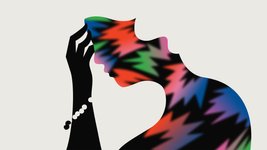Haley Nahman • #172: Trick questions
Saved by Lani Assaf and
In Lauren Oyler’s essay about anxiety last week, she referenced a late 19th century diagnosis known as Americanitis, which described “the high-strung, nervous, active temperament of the American people.” Whether incited by advances in technology (causing loss of sleep, excessive worry) or capitalism (causing long work days, fast pace of life), the result was, according to experts of the time, a rattled population unable to relax. A black mirror of the American dream, Americanitis took the same ideas favored by patriots and recast them as depressing. Here is the land of possibilities—so vast in scale you’ll forever be unsatisfied!
Saved by Lani Assaf and

what if our distress is a perfectly normal response to a society that’s lost its way? What if unfettered capitalism is making us sick?